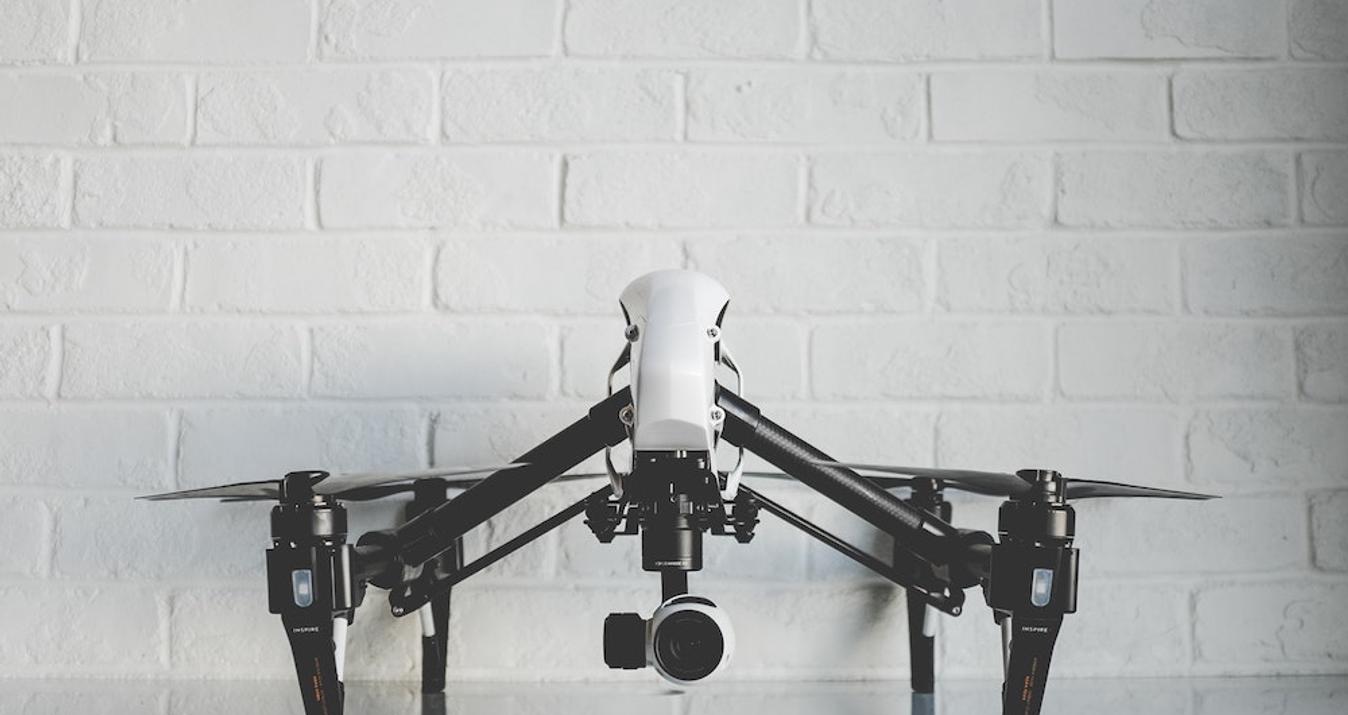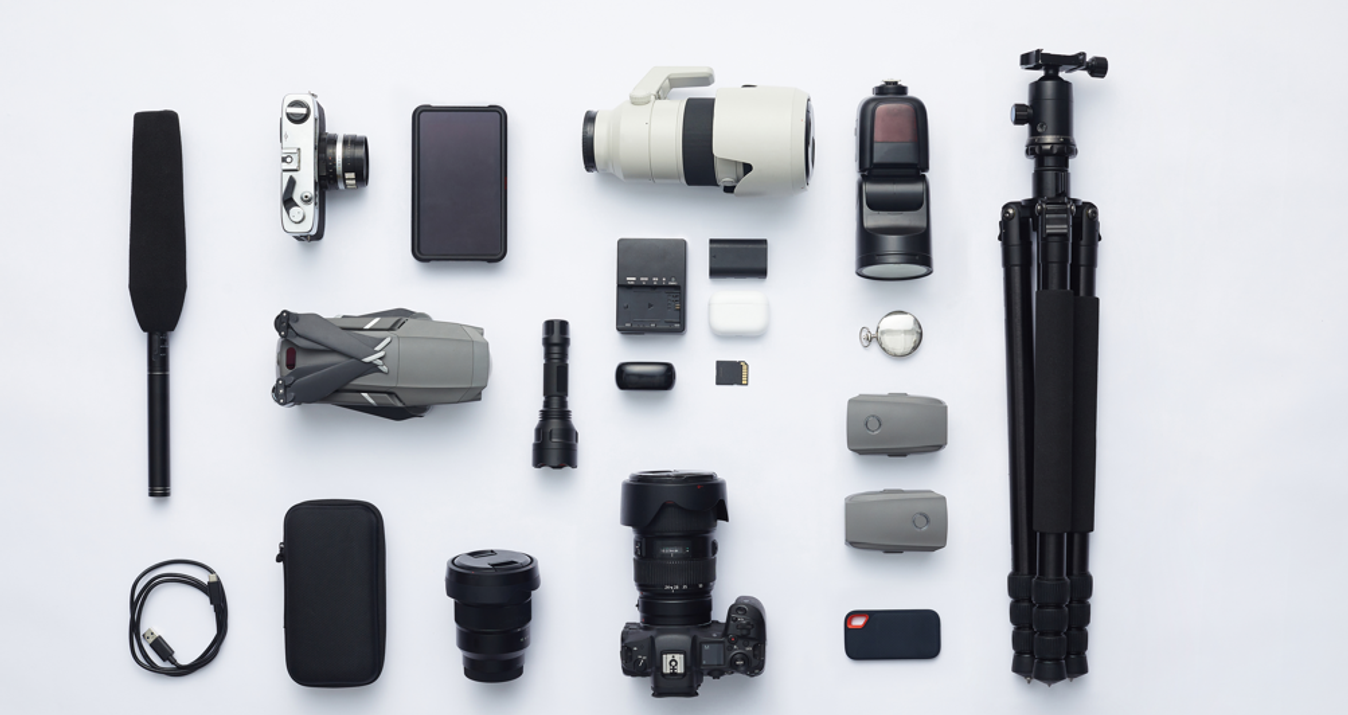When Were Cameras Invented: A Timeline Of Innovation
December 23, 2024
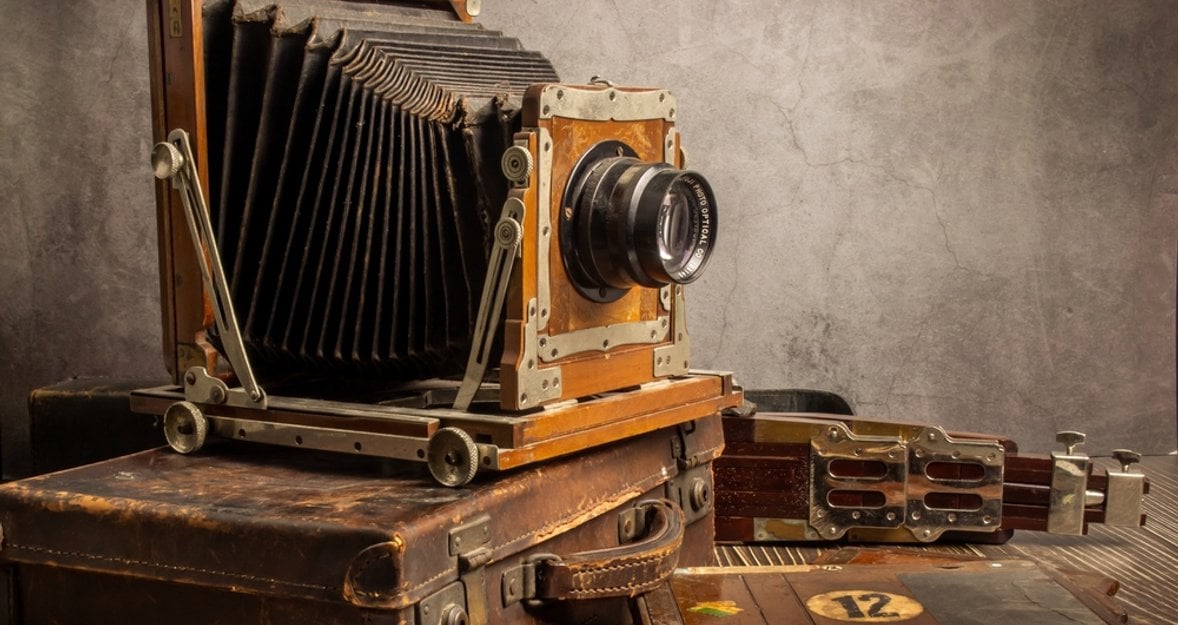
Have you ever wondered how things in our everyday lives are arranged and how they were invented? Cameras are gadgets without which it isn't easy to imagine our present. Today, in our blog, we will turn to how the birth of modern cameras and their history began.
You are holding a new model of a well-known brand of camera. How much does its appearance differ from the very first prototype? And the functionality? Finally, how old are cameras, and when was the world's first camera invented? Let's take a trip back in time to explore the rich history of this indispensable device, from today's high-tech portable devices to a simple box that took the first blurry photos 200 years ago.
This article describes the history of the camera. You will learn about the origins of the first camera ever when it was first designed, who invented it, and how this revolutionary invention revolutionized the way we capture and preserve moments in time. Several centuries of innovations and improvements have given us the device we have today.
Camera and Its Evolution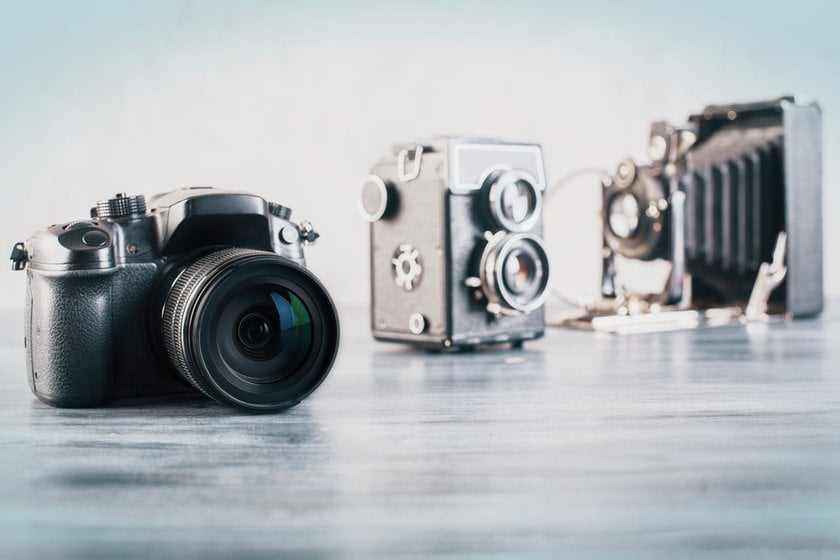
Modern and early cameras are devices capable of capturing still or moving images with light. They use light through optics, mechanics, electronics, and chemistry. Modern digital devices use an electronic sensor, while analog mediums use film.
The daguerreotype, invented in 1839 by Louis Daguerre, was the first commercial photography process.
Early cameras were large and cumbersome, requiring complex chemical processes to develop images.
The Leica 35mm camera, introduced in 1925, revolutionized portable photography and candid shots.
In 1975, Kodak engineer Steven Sasson invented the first digital camera, marking a new era in photography.
By the early 2000s, digital cameras replaced film cameras, offering instant image viewing and editing.
The iPhone, launched in 2007, integrated high-quality cameras into smartphones, transforming everyday photography.
Modern cameras now include AI and computational photography, enabling night mode and real-time enhancements.
Further, developing technologies will allow the creation of nano-cameras, indispensable in medicine, science, and possibly everyday life. What will get photographers? Image quality and focal lengths will also improve. Just look at how far this device has come!
Advanced yet easy-to-use photo editor
Get Luminar Neo NowEarly Attempts at Image Capture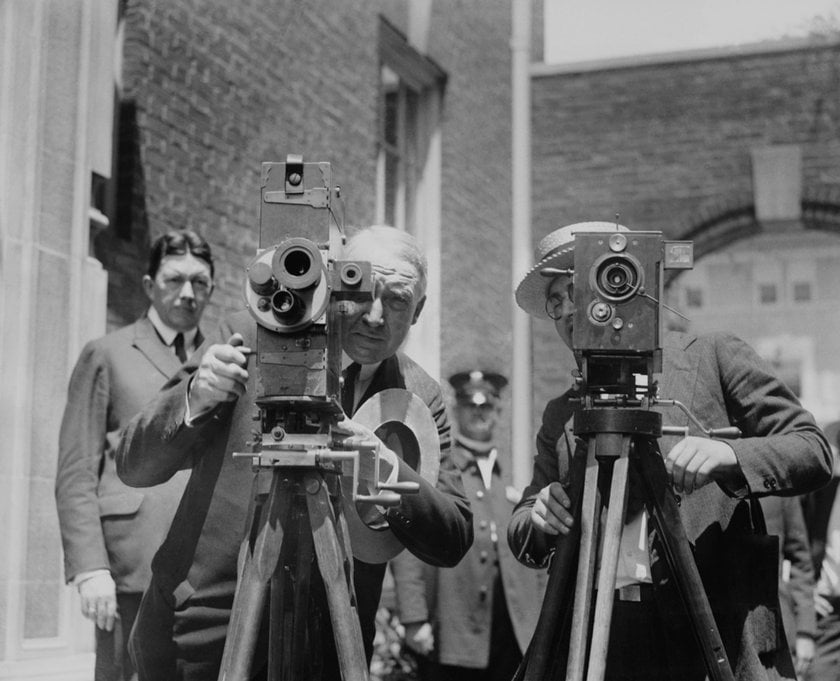
One of the earliest photography methods and subsequent reproduction was the camera obscura. Principles similar to it were documented by ancient Greek and Chinese philosophers as early as the 5th century BC. Ancient Greek and Egyptian cultures used devices like the "dark chamber" to project images onto a surface. These early experiments became the basis for the development of photography centuries later.
The Emergence of the Camera Obscura
The camera obscura means "dark chamber" in Latin. It was the first camera ever created as a precursor to modern photography and played a key role in developing visual imaging techniques. What did the first camera look like? It was not a portable device as we think of it today. Instead, it was a room-sized structure or box with a small opening on one side. The light passed through this hole and projected an inverted image onto a surface inside the camera. These first devices did not create images. They were used mainly to view or project them.
Artists and scientists have used this invention for centuries for painting and scientific research. The principles of operation of this device laid the foundation for the understanding of optics and light. It took humanity a long time to finally have the first cameras that created images, not just transmitted them, in the 19th century AD.
When were Cameras Invented?
Johann Zahn, in 1685, designed the first portable photo device. Thus, the first camera invention date is considered to be this year. Progress was made in the development of this technology only 130 years later. The first photographs belong to Joseph Nicephore Niepce. They were made in 1816. Johann Zahn and Joseph Nicephore Niepce share credit for the invention of the first camera. The picture was taken with a device he built using silver chloride-coated paper. On the paper, the regions not exposed to light became dark. One of many interesting facts about photography is that Nicephore's technology created non-permanent pictures.
So, although the first camera was designed in 1685 by Johann Zahn, the first photographs were taken by Joseph Nicéphore Niépce in 1816. This timeline highlights the gradual progress in early photography technology.
Camera Invention of the Daguerreotype
The first device vaguely reminiscent of a camera, the heliograph, was invented in 1816 by Joseph Nicéphore Niépce. In 1839, the French artist and inventor Louis Daguerre created something more similar to today's cameras, the daguerreotype. By irradiating a silver-plated copper plate and developing it with mercury vapor, he obtained a unique image that did not fade, was clear, and accurately reproduced the original. Thanks to this, the daguerreotype quickly gained popularity.
The French government purchased the rights to the daguerreotype design in exchange for a lifetime pension for Louis and his son. France presented this technology and its science as a "gift to the world."
Who Invented Camera?
It is difficult to say who owned the first invention of the camera. Its creation is attributed to several people of different eras. For example, it is known that the oldest camera obscura was developed by scientist Ibn al-Haytham in the 11th century.
The history of the camera is shaped by the contributions of numerous inventors and pioneers who left an indelible mark on the evolution of photography. Among them, Joseph Nicephore Niépce is one of the first figures credited with creating the world's first photograph in 1826 using a camera obscura and a light-sensitive chemical mixture. The already mentioned Louis Daguerre revolutionized the way images were taken. George Eastman introduced the improved Kodak camera in 1888. Edwin Land created the Polaroid instant camera in 1948. They laid the foundations of photographic technologies and paved the way for the next generation of inventors of modern photo devices.
Exclusive Tools of Endless Possibilities in One AI Editor
EXPLORE NOW!Photo Editing the Old Pictures with Luminar Neo
Although the history of the camera stretches back centuries, modern advances have revolutionized how we capture and edit images. With software like Luminar NEO, photographers can breathe new life into old analog photos. Whether restoring faded colors, removing blemishes, or enhancing contrast and clarity, Luminar Neo offers tools tailored to your vintage photo editing needs.
Its Old Photo Restoration Software will enable you to restore old photos easily, quickly, and creatively. A good photo scanner and image editor can instantly bring old memories to life. It also offers tools for removing noise, adjusting sharpness and contrast, and working with black-and-white images. This unique technology converts black-and-white, illuminated, and monochrome images into high-quality color copies as if the image was created on a modern device.
Lens Correction Software corrects distorted images caused by certain lenses. Barrel and pincushion distortion are common types that can be rectified using lens correction functions.
You can seamlessly transform analog images into vibrant digital masterpieces using artificial intelligence-driven technology while retaining their nostalgic charm. From vintage family portraits to historical landmarks, Luminar Neo lets you unlock the full potential of old photos, bridging the gap between past and present with unparalleled precision and creativity.
You can also turn modern photos into old-school images with various vintage filters. Feel free to experiment; Luminar will help you realize your ideas.
Value for Society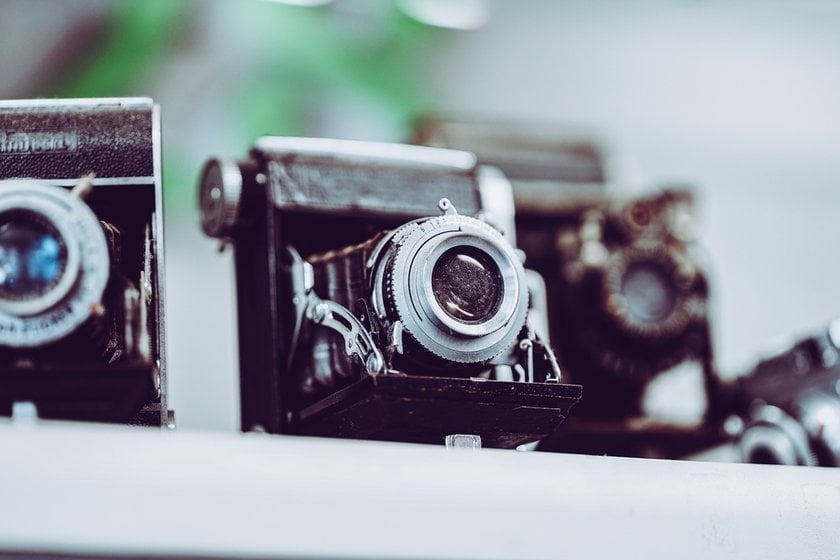
The influence of photography on society and culture is extremely large. Its role is invaluable, first of all, in documenting historical events. The invention of the camera has had an impact on society and culture over the past two centuries. Photography helps preserve historical events and moments that shape our collective memory. Not only the daily life and life of one or another era but also real pictures of wars, revolutions, and cultural movements remain in the photographs for their transmission to the next generations. No words can convey the real picture. That is why they are so valuable. In addition, photography has influenced the development of art, journalism, science, and countless other fields, shaping our understanding of the world and deepening globalization.
Bottom Line
For millennia, people have worked fruitfully to create the camera we hold today. Photo- and video cameras — are an integral part of our present. At each stage, photography has evolved, helping people document history and express creativity. Modern technologies accompanying the field of photo art help us work even with images created by old devices. You can easily digitize an image and process it with a photo editor like Luminar Neo to restore, preserve, and pass it on to future generations in a more familiar way. Now that you know when the cameras were created, you can look at this portable device differently and appreciate the efforts of the many people who contributed to its creation.






